BU President Emeritus Aram Chobanian (Hon.’06) Dies at 94; Helped Stabilize the University in Tumultuous Period
Remembered for his warmth, friendships, and steady hand; BU’s medical school was renamed last year in his and his lifelong friend’s honor after record gift
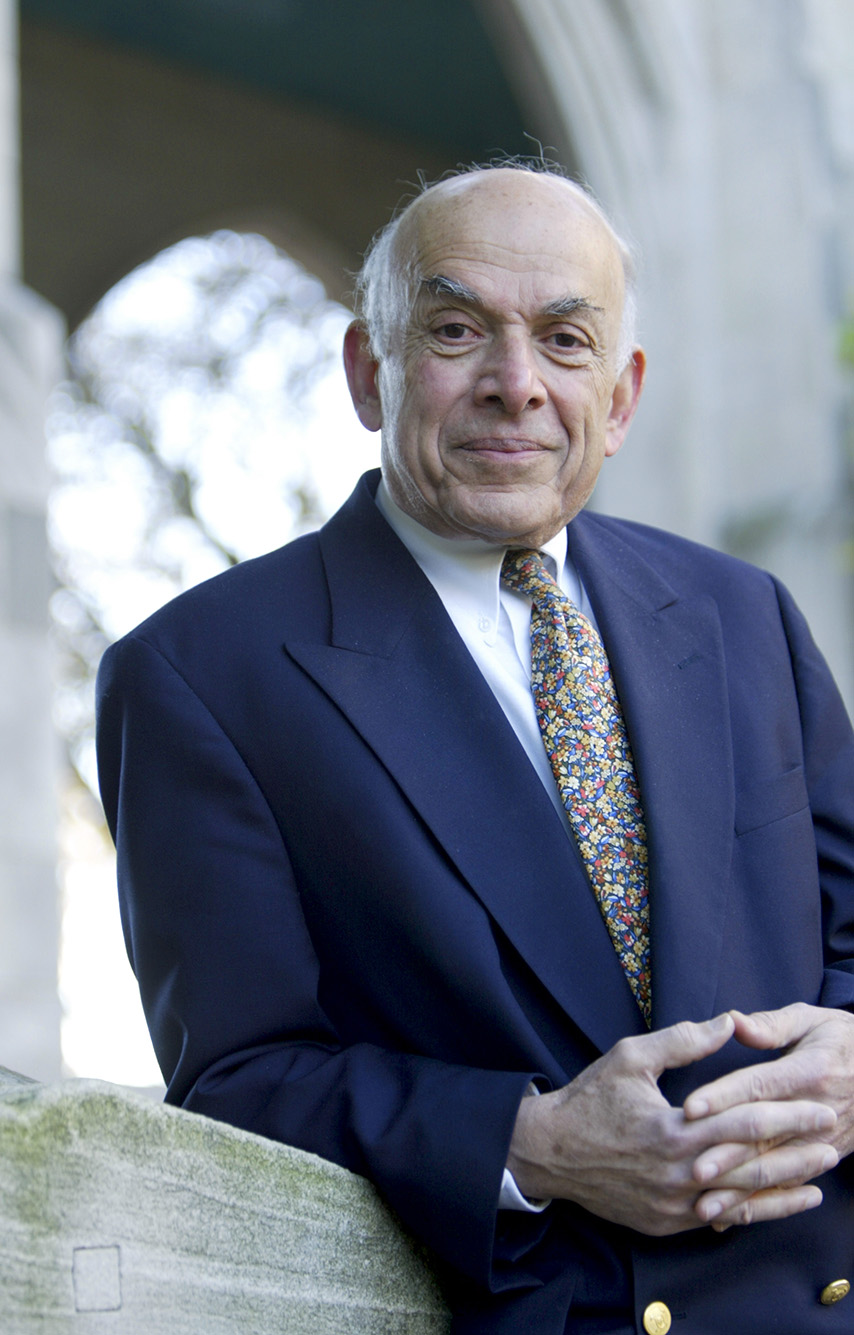
BU President Emeritus Aram Chobanian (Hon.’06), who died August 31, is being remembered not only for his outstanding medical career and leadership of what was then the School of Medicine and the Medical Campus, but for stabilizing the University during a leadership crisis. Photo by Lane Turner/Boston Globe via Getty Images
BU President Emeritus Aram Chobanian (Hon.’06) Dies at 94; Helped Stabilize the University in Tumultuous Period
Remembered for his warmth, friendships, and steady hand; BU’s medical school was renamed last year in his and his lifelong friend’s honor after record gift
Aram Chobanian, whose brief tenure as Boston University president in the early 2000s stabilized the campus during a tumultuous period and whose long University service oversaw the growth of BU’s Medical Campus, died on Thursday, August 31. He was 94.
Chobanian (Hon.’06) had returned to BU just last year, when his lifelong friend from their boyhood in Rhode Island, Edward Avedisian (CFA’59,’61, Hon.’23), a noted philanthropist, donated a stunning gift of $100 million to the medical school. Avedisian said that he wanted the school renamed in Chobanian’s honor and Chobanian countered that he would agree only if the school was renamed in both of their honors. The arrangement was consummated, and the BU Chobanian & Avedisian School of Medicine became the name of the school. (Avedisian also died recently, in December 2022.)
“How could I obstruct a gift of $100 million to the medical school that I spent my life at?” a humble Chobanian said at a ceremony announcing the donation.
Kenneth Freeman, BU president ad interim, said on Friday that although he was only briefly acquainted with Chobanian, his achievements as a physician and an academic leader are legendary. “By every account he was an amazing leader, deeply appreciated for his kindness and his devotion to the great calling of medicine,” Freeman said. “He was called to serve Boston University as interim president at a crucial moment, and Boston University is better for his service.”
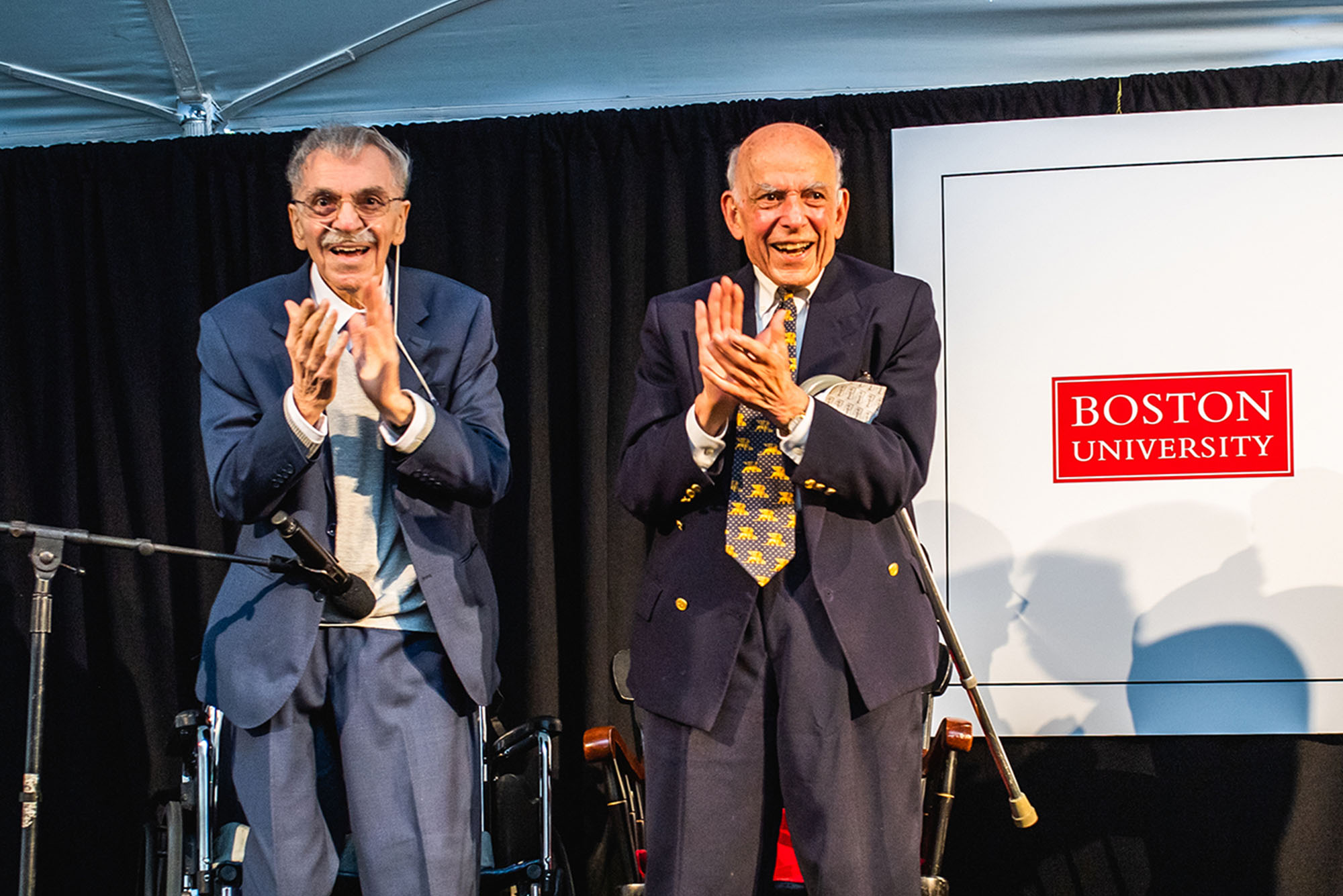
A cardiologist, Chobanian, who joined the School of Medicine faculty in 1962, served as BU’s interim president, then ninth president between 2003 and 2005, preceding Robert A. Brown, who was president from 2005 until stepping down this year. The University had initially hired former NASA administrator Daniel Goldin as president in 2003, only to pay him $1.8 million when the offer was rescinded after conflicts arose with the trustees and John Silber (Hon.’95), BU’s seventh president, and at the time, University chancellor. That turmoil drew national media coverage.
Karen Antman, dean of the Chobanian & Avedisian School of Medicine and provost of the Medical Campus, said that despite his responsibilities in such a challenging time, Chobanian retained his warm personal relationships with faculty, students, and friends, and many people on the Medical Campus valued his friendship and thoughtful leadership. “We will very much miss him,” she said. “The medical school is now named in his honor along with his friend Edward Avedisian, for generations to come.
“Aram was so many things to so many people—physician, accomplished scientist, scholar, teacher, mentor, leader and friend. He provided calm and wise leadership, first on the Medical Campus, and then as president of Boston University during particularly challenging times.”
Aram was so many things to so many people—physician, accomplished scientist, scholar, teacher, mentor, leader and friend.
Even though Chobanian’s tenure as president was brief, and officially his capacity was interim, in recognition of his service and the vital role he played, at the conclusion of his leadership, the University trustees officially named him as BU’s ninth president, dropping “interim” from the title.
“When the next history of Boston University is written,” Freeman said, “I believe the author—or authors—will affirm that among our presidents, none had a greater impact over a shorter term.”
Reached on Friday, Brown called Chobanian “a consummate academic leader, a brilliant physician scientist, and an extraordinary dean” of the BU medical school now named in his honor. “He served as president of the University at a critical time in our history, guiding the University after a failed presidential search,” Brown said. “He was a friend and advisor who will be sorely missed.”
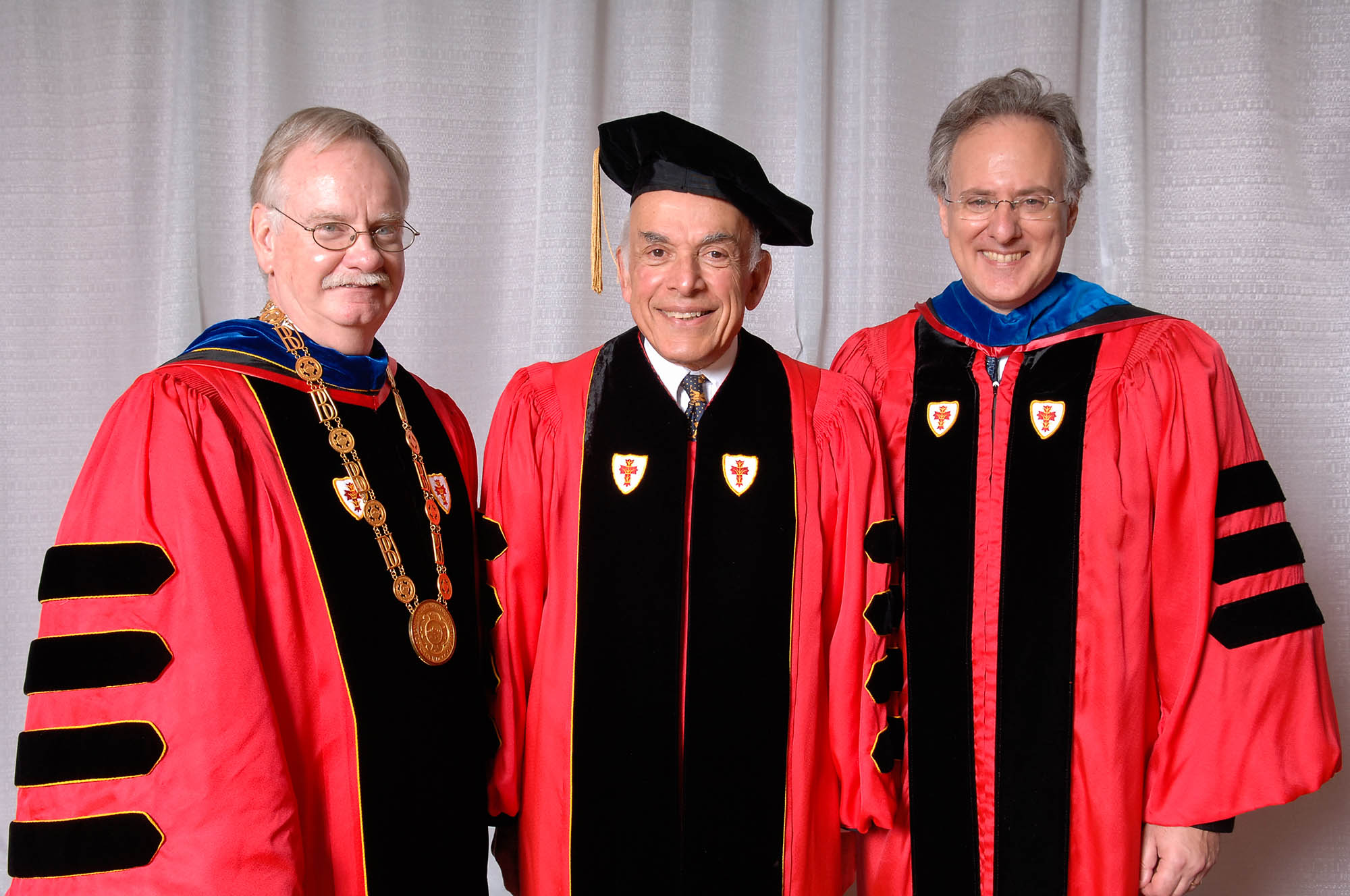
Chobanian’s presidency capped years of service to the University. He already had led major changes as dean of the medical school, a position he assumed in 1988. In 1996, the University added the title of provost of the Medical Campus. During his tenure, he oversaw the merger of Boston City Hospital, the city’s public hospital, and the University’s Medical Center Hospital, resulting in the creation of Boston Medical Center (BMC), the Chobanian & Avedisian School of Medicine’s affiliated teaching hospital. Today, BMC continues as the city’s safety net hospital, with a special mission of serving indigent patients.
He was also instrumental in creating Biosquare Research Park, a partnership of BU, BMC, and the developer Spaulding & Slye Colliers. The South End park is home to state-of-the-art life sciences laboratories.
Of Armenian ancestry, Chobanian and his late wife, Jasmine, who died in 2014 after 59 years of marriage, were activists on behalf of Armenia. Aram Chobanian served on the board of directors of the nonprofit Fund for Armenian Relief, which works to improve the training of doctors and healthcare providers in that country, establish medical residency and postgrad education programs, and supply medicines and medical equipment. He was also a member of the National Academy of Sciences of the Republic of Armenia.
While on the School of Medicine faculty, Chobanian led the Division of Medicine’s hypertension and atherosclerosis section. He also was vice chairman for cardiovascular affairs in the department of medicine.
He was the founding director of the Whitaker Cardiovascular Institute, created in 1973 “to foster advances in research, treatment, and education in the broad area of heart and vascular disease,” according to its website. And when the National Institutes of Health decided to finance a National Hypertension Specialized Center of Research at BU for two decades, starting in 1975, Chobanian was its director.
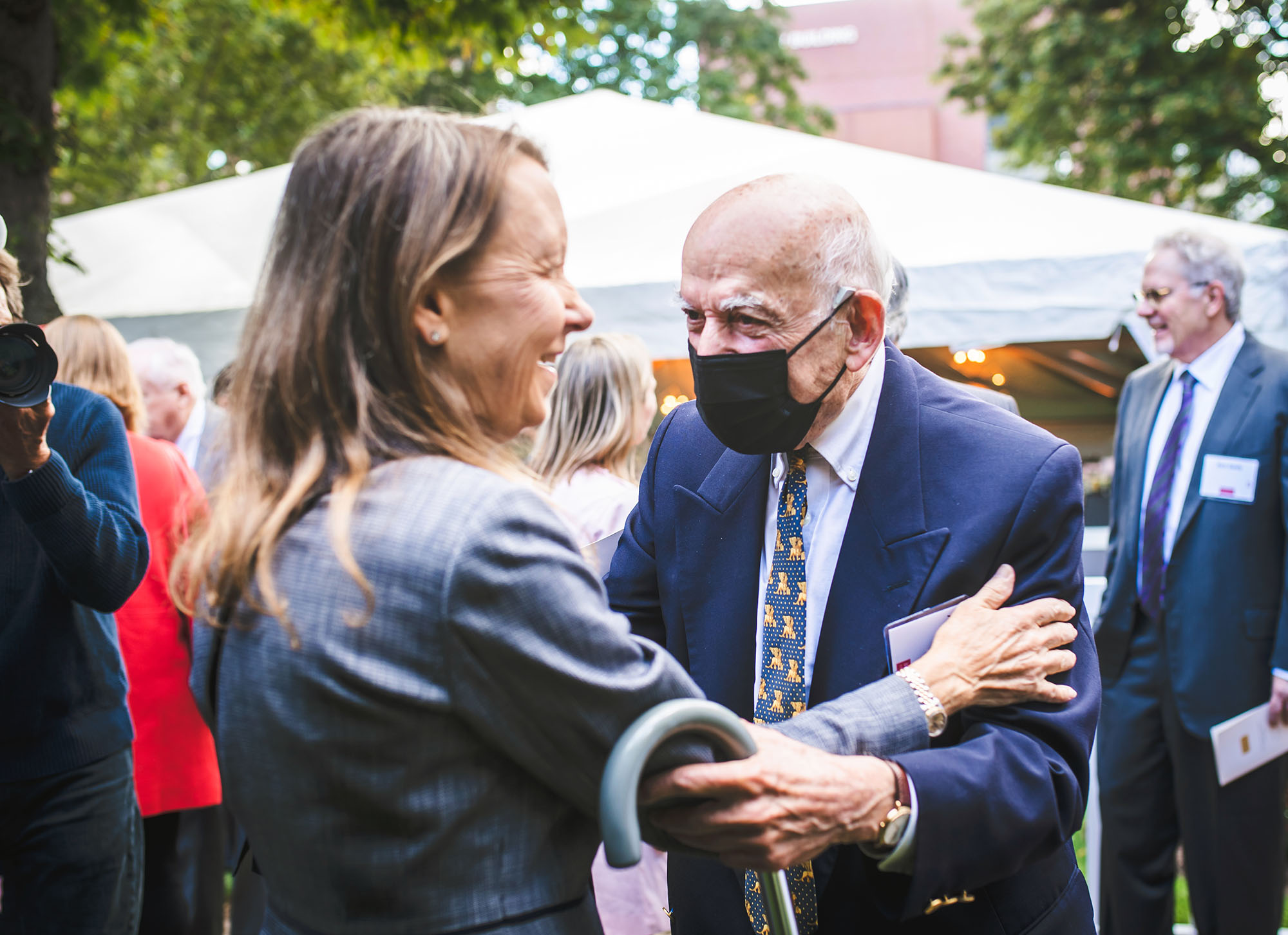
He was also the author of two books and more than 275 papers and the principal investigator, year in and year out for a quarter century, on research grants in excess of $1 million.
After stepping down as BU’s president in 2005, Chobanian returned to his work as a University Professor and the John I. Sandson Distinguished Professor of Health Sciences. In 2007, he chaired the ad hoc committee that recommended disbanding the University Professors program, which taught academically gifted undergraduates, in favor of a new honors program. That successor ultimately became Kilachand Honors College.
Over the course of his career, Chobanian received numerous honors, including the Massachusetts Medical Society’s Lifetime Achievement Award in 2008 for his “long and distinguished medical career dedicated to research on hypertension and vascular disease, patient care, and student education.” He had been a member of the society since 1961. He was also a member of the American Academy of Arts & Sciences.
Born in Rhode Island, Chobanian graduated from Brown University and Harvard Medical School. He is survived by his children, Karin Chobanian Torrice, Lisa Chobanian Ramboeck, and Aram Chobanian, Jr., and two grandchildren, Marc Torrice and Vanessa Torrice (CAMED’22).
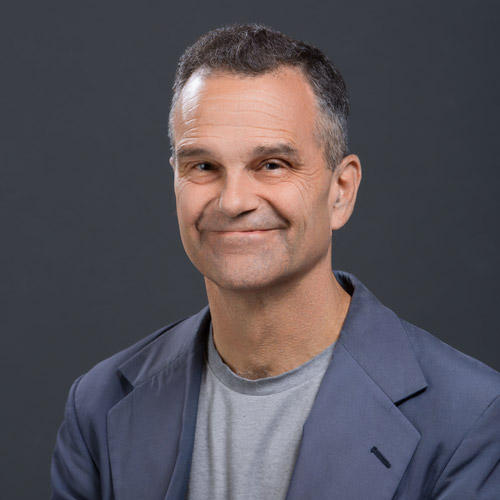
Comments & Discussion
Boston University moderates comments to facilitate an informed, substantive, civil conversation. Abusive, profane, self-promotional, misleading, incoherent or off-topic comments will be rejected. Moderators are staffed during regular business hours (EST) and can only accept comments written in English. Statistics or facts must include a citation or a link to the citation.